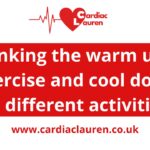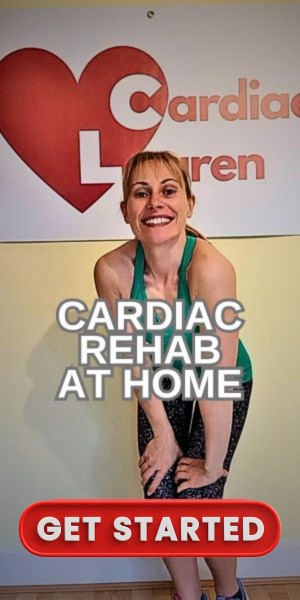After a heart event, it is normal to feel anxious and unsure about your recovery. Many people aren’t sure about which activities they can resume and which to avoid, as well as understand the steps to their rehabilitation when they can return to work.
We believe that knowledge is power when it comes to recovering from a mild heart attack, in order for the individual to take back control of their health; avoid complications or setbacks; and continue to enjoy their life to the fullest.
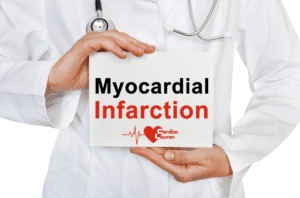
Table of Contents
What is a mild heart attack?
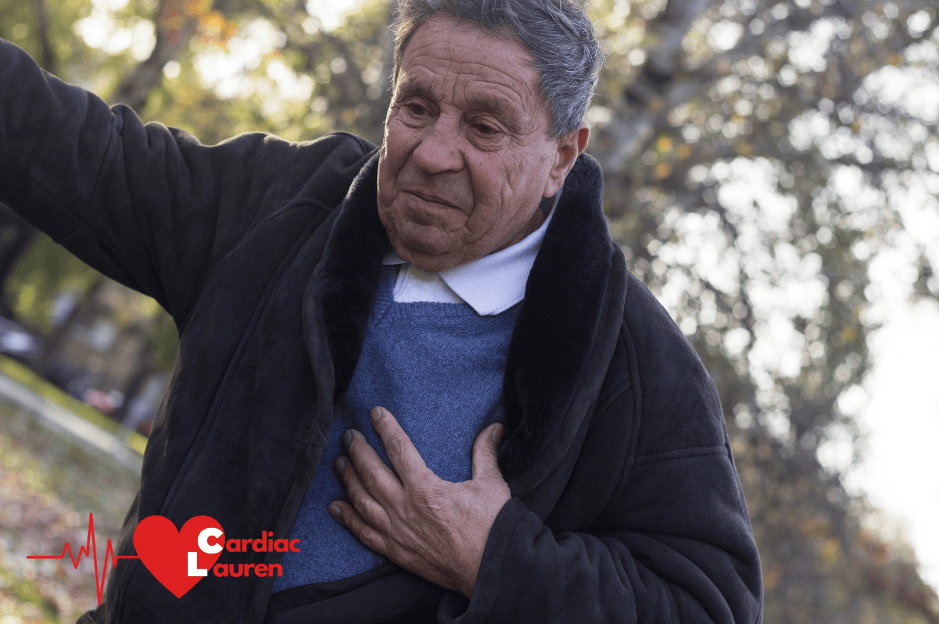
The term ‘mild’ is used to describe a heart attack in which the blood supply to the heart becomes only partially blocked, as opposed to total blockage for a prolonged period of time. A ‘mild’ heart attack is formally known in the medical world as a Non-ST segment elevation myocardial infarction (NSTEMI) as opposed to the more severe ST-segment elevation myocardial infarction (STEMI). Nevertheless, a mild heart attack is still a serious medical event and one that can be deeply upsetting. The positive news is that recovery programmes are well-researched and trusted, to give you the best chance of avoiding future heart events and getting back to normal life. Many people make a full recovery from a heart attack.
Phase 1: What to expect after a mild heart attack while still in hospital
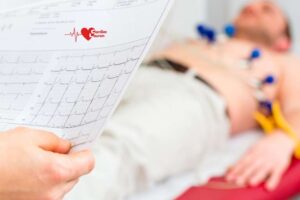
After a mild heart attack, you may remain in the hospital to receive medical treatment and undergo diagnostic tests to determine the extent of damage to your heart. This is known as ‘Phase 1’ and the main goals during this time are to stabilise the patient, prevent further damage and initiate treatments to help the heart muscles recover.
Your hospital treatment plan in Phase 1 will depend on the severity of the heart attack and any underlying medical conditions you may have. Generally, treatment may include medications such as aspirin, nitroglycerin, beta-blockers, or statins to manage symptoms, improve blood flow to the heart, and reduce the risk of further heart attacks.
If you have had angioplasty or stents following your mild heart attack – a painless procedure used to open up narrowed or blocked arteries – you can expect to be in the hospital for about 2-3 days. Any other procedures or surgeries follow more severe (STEMI) heart events, where recovery time in the hospital will be longer.
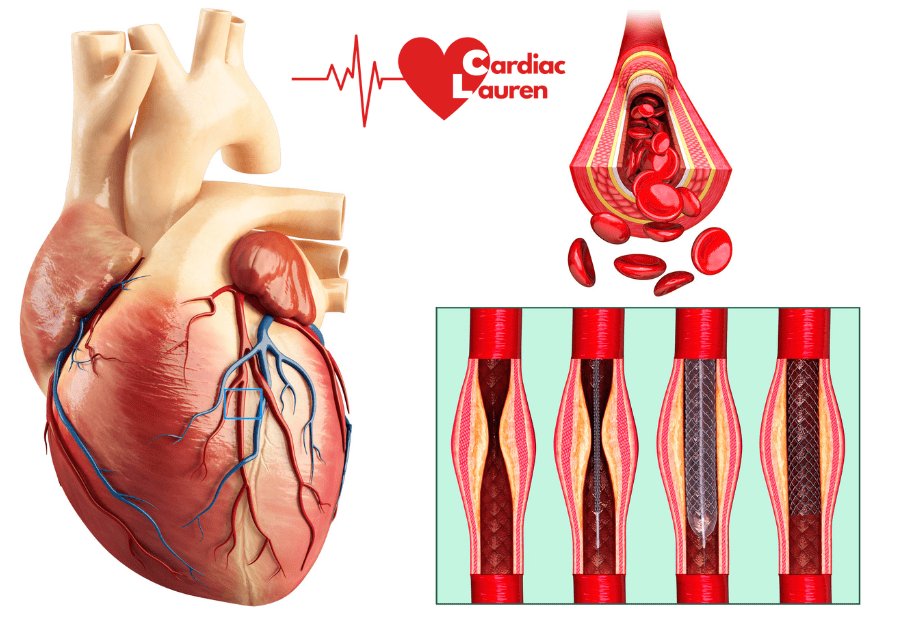
Bottom right: blocked artery, angiogram, angioplasty, stent fitted into the artery.
You may also receive consultation on lifestyle changes you should make, such as adopting a heart-healthy diet, quitting smoking, reducing alcohol consumption, and engaging in regular physical activity.
When your doctor decides that you are in a stable condition to go home and begin your recovery, you will be discharged from the hospital. The summary notes from the hospital will have been forwarded to the local NHS cardiac rehabilitation team and they will make contact by phone.
For more information about Phase 1 after a mild heart attack, click here.
Phase 2: what to expect after a mild heart event after hospital discharge
Recovering from a heart attack at home can be a gradual process which requires the patient to be disciplined and proactive about their health. Alongside the NHS cardiac rehabilitation team who you will be in contact with, you will be responsible for your own recovery – but don’t worry: the main thing to do in Phase 2 is rest and take it easy.
You can expect to feel tired and sluggish when you return home, however, the key here is to continue doing light household activities. These include getting up and getting dressed in the morning; washing; making hot drinks; going up and down the stairs; washing up and going for short walks.
It is recommended that a trusted person stays with you to help out, however, you should also try to be as independent as possible.
Aside from rest, you will need to follow the instructions given to you by your doctor, which are likely to include taking medication at the correct times. Other tasks you will need to do as follows:
Remember to:

- Take your discharge letter from the hospital to your GP or ask a loved one to do it. This allows your GP to know about your heart attack and the treatment you’ve had.
- Make an appointment to see your GP within the first couple of weeks of being home so that you can get a repeat prescription for your medicines.
- Take your medication according to your schedule.
- Attend your follow-up appointment at the hospital.
- It is also important to look out for your mental well-being after a mild heart attack. It is common to feel anxious, depressed, overwhelmed or hopeless after this upsetting event.
You can visit the British Heart Foundation’s emotional support page here. They also have an online magazine called Heart Matters about learning to cope with your diagnosis – Cardiac Lauren is a fan of this magazine.
Mind is also a mental health charity with many resources to support you. Why not check out their online community, Elefriends, to chat with those who might be experiencing the same feelings as you?
You could also visit the NHS self-help webpage to read about online or remote services that can improve your mental well-being.
For more information about Phase 2 after a mild heart attack, click here.
Phase 3: your active recovery programme after a mild heart attack
In Phase 3, education, exercise and support from a multidisciplinary team are put together in a 4–12-week programme. The primary goal of Phase 3 cardiac rehabilitation is to help individuals return to their normal daily activities and improve their overall health and well-being.
The individual takes on more responsibility for their recovery after the mild heart event, as they build up to be able to complete 20 minutes of continuous activity safely (being able to monitor their own capability and intensity).
Patients will become very familiar with RPE, which stands for Rating of Perceived Exertion, during Phase 3 recovery. This is a subjective measure of how hard someone feels they are exercising – to help people gauge their intensity level during physical activity. Anywhere between RPE 11 & 14 is generally desired – i.e. ‘fairly light’ to ‘somewhat hard’.
Phase 3 recovery after a mild heart attack sees the patient become physically stronger and more knowledgeable about their condition.
More information about Phase 3 recovery after a mild heart attack can be found here.
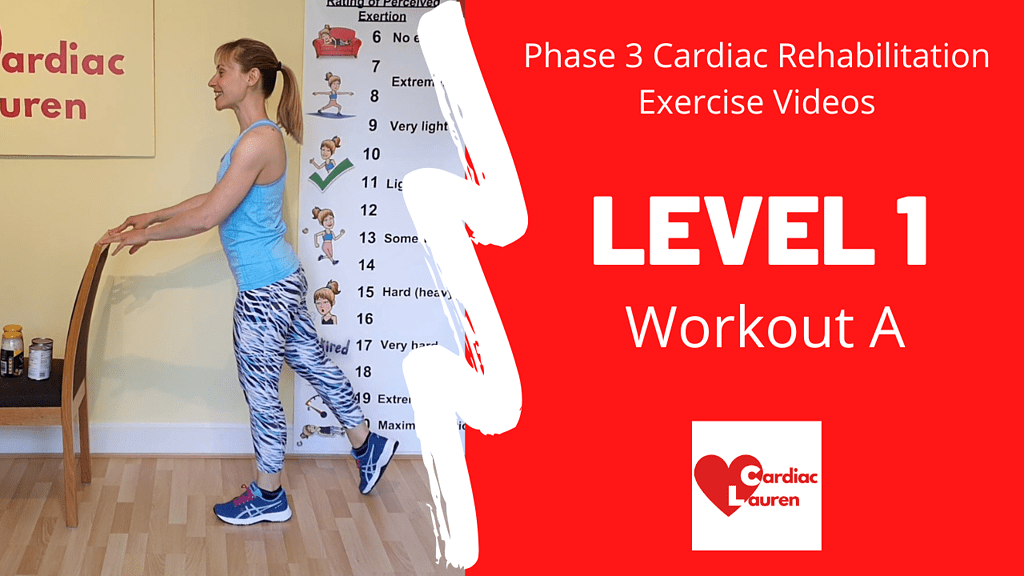
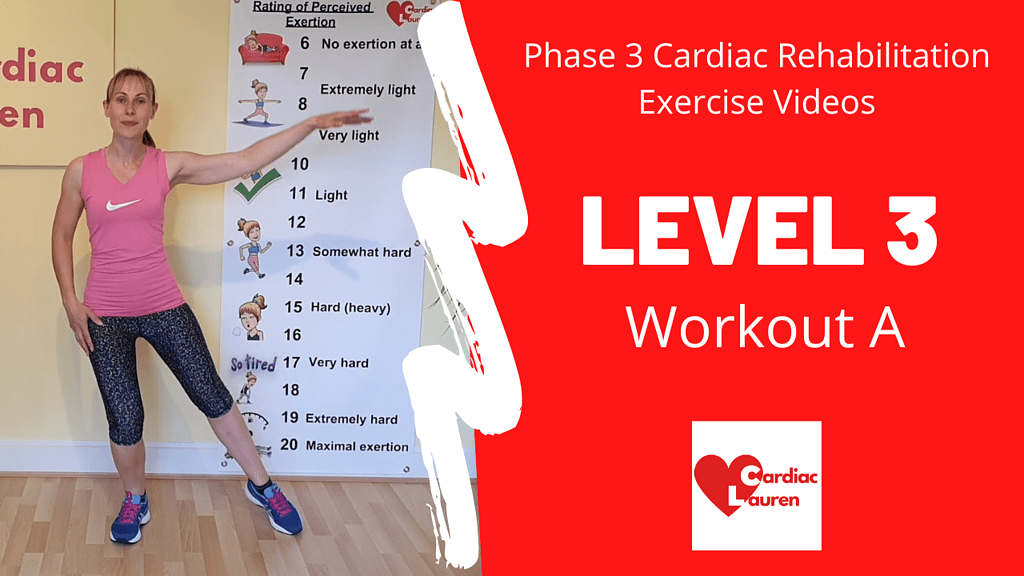
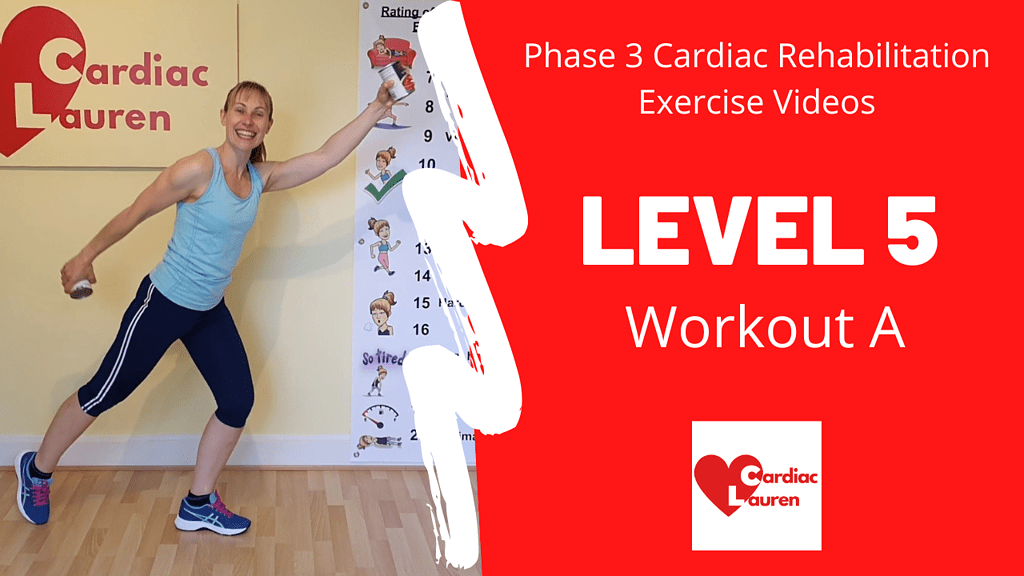
Phase 4 recovery after a mild heart attack
Phase 4 cardiac rehabilitation is where the fun starts! You will have built up strength and a generally enhanced well-being after your Phase 3 exercise and education programme, which means you are now ready to start reaping the benefits of regular fun, challenging and, crucially, safe exercise.
Joining Phase 4 cardiac rehabilitation exercise classes can be life-enhancing and build your strength, mood and confidence while living with a history of a mild heart attack.
Cardiac Lauren offers friendly and convenient online classes to suit all Phase 4 patients after a mild heart event – whether they are used to regular exercise or are just starting their fitness journey.
My participants love the fact that they can choose when to exercise and which style and intensity of class to do each time.
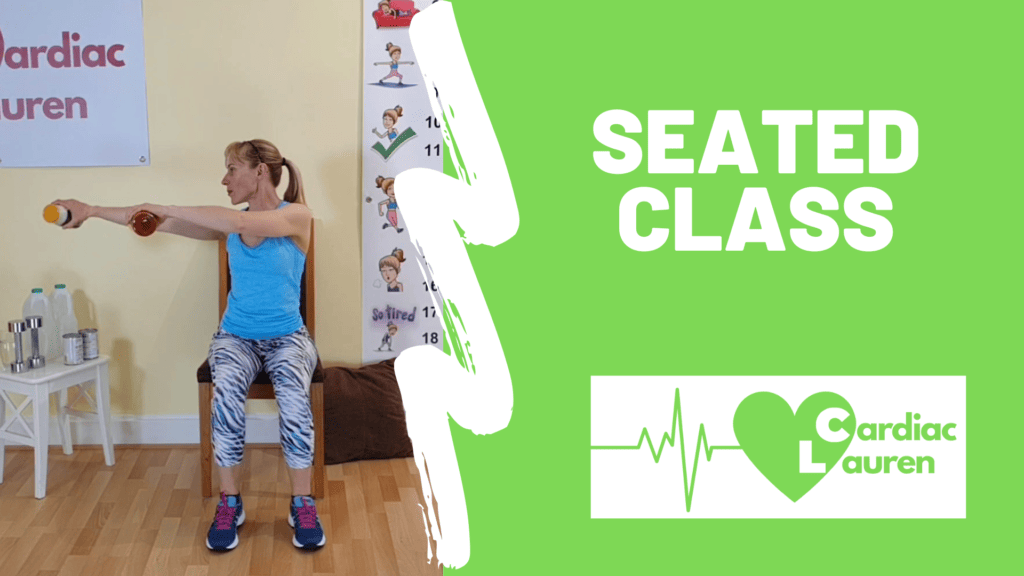
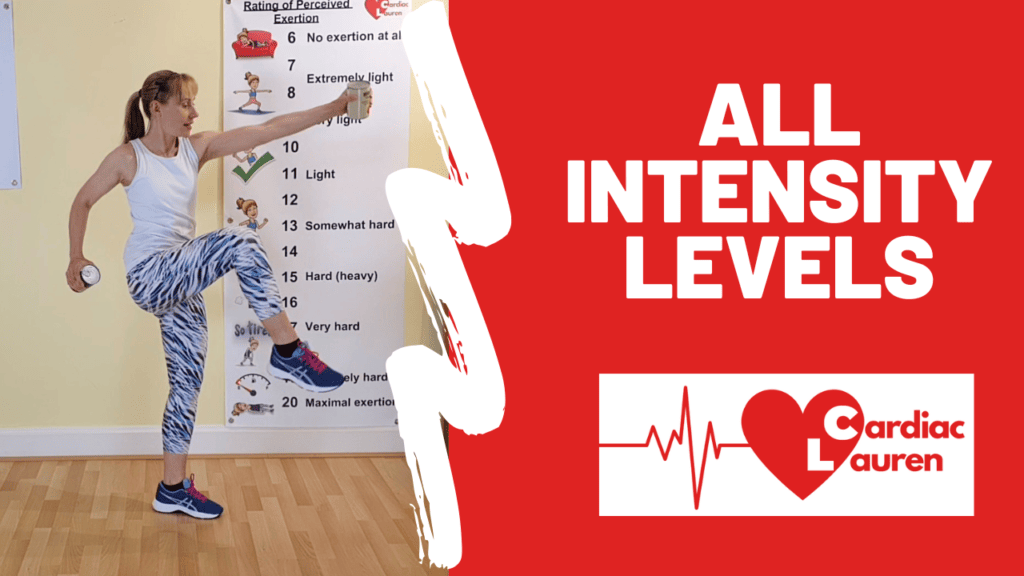
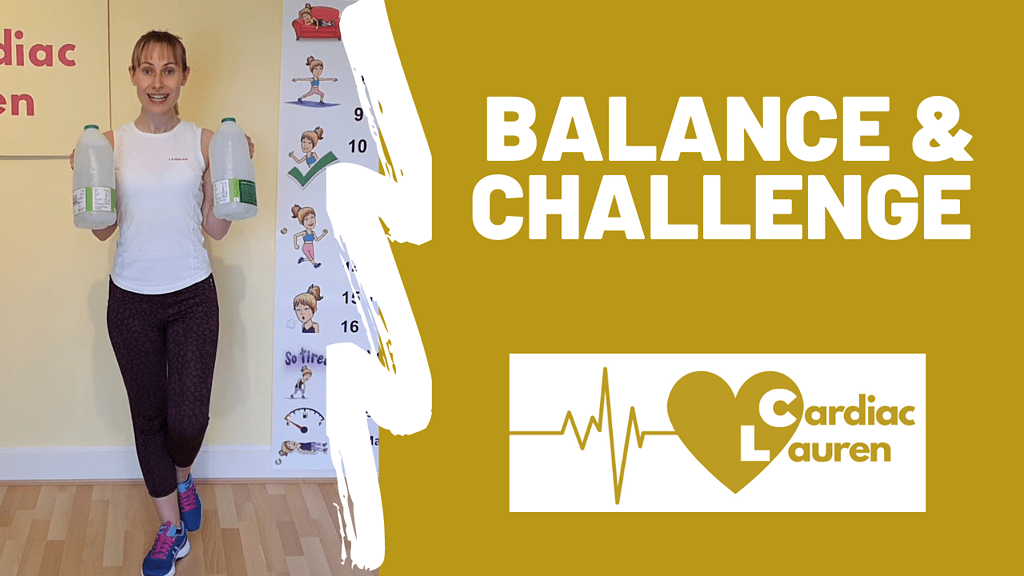
Choose your plan and get started here.

